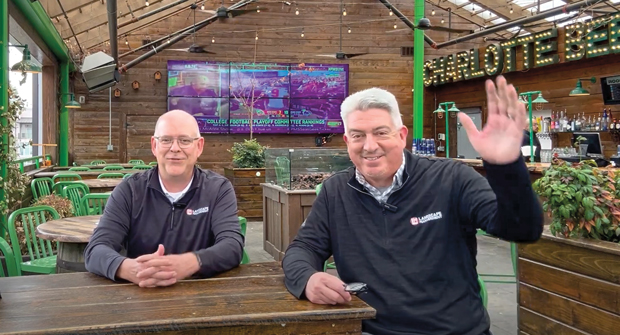There’s an intriguing quote attributed to artist Pablo Picasso, “Good artists copy. Great artists steal.”
That’s what the best of the best in any profession do. Excellent writers curate concepts and borrow themes from other writers all the time. Top landscape designers pull ideas from not only nature but public gardens and parks created by other designers. Successful businesspeople do the same—they make some of their best decisions based on what’s worked in other industries or by modeling other organizations that have found success.
Just ask Jim McCutcheon, LIC. He’s CEO of HighGrove Partners and the subject of this issue’s 1-Minute Mentor department.
When I spoke with him about his involvement in national trade associations, he said one of the greatest benefits of membership has been meeting other contractors and traveling around the country to visit them and do R&D—“rob and duplicate.”
He chuckled when he said it, and so did I, but the programs and systems he’s nabbed from others and put to work in his business are no laughing matter. HighGrove ranks 88th on the new LM150 list—and it’s on track for 8 percent growth in 2013.
Our LM150 supplement features 13 ideas ripe for McCutcheon-esqe R&D.
Some of my favorite ideas to consider taking?
American Landscape Systems’ move to in-source all of its work. “It’s such a bad marketing tactic to have another landscape company on one of your projects,” says Vice President Joseph Angelone.
Earthworks’ effort to host educational sessions for its clients. “Look at the biggest education shortfalls in your area,” says President Chris Lee. “Then go there.”
Mission Landscape Cos.’ strategy to improve face-to-face client communications by visiting clients in person more often for things as simple as letting them know when tree work will take place. “Today emails get buried,” CEO David DuBois says. “That little touch is pretty basic but effective.”
The Stockner Group’s realization that it needed to simplify its message to clients by rebranding. “A rebrand is not about you, it’s about servicing your clients better,” says President Gary Stockner.
Please, read through these items and “borrow” from them shamelessly, remembering that nothing’s truly original. There’s no need to reinvent the wheel. And you don’t have to feel guilty about all of the great ideas you’re going to steal as long as you give credit where it’s due. That’s the difference between borrowing an idea and completely ripping something off: Sharing where it came from.
As Austin Kleon, author of “Steal like an Artist” points out, the justification is right there in the Bible: “There’s nothing new under the sun.”

